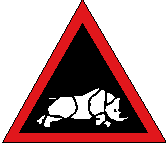
Built –
Type – Wehrmacht, purpose unknown
History –
Updated 18 Jun 2024
Was originally two barracks, Dettingen Kaserne nearest the town and then Kolburg Kaserne, Dettingen was built first and briefly known as Alamein Barracks.
Home to:
126th (Highland) Field Regiment RA 1945-1946 (1)
1st Battalion Black Watch (Royal Highland Regiment) 1946 (2)
462 Field Battery of 86th (Hertfordshire Yeomanry) Field Regiment RA 1946 (3)
B Squadron of 1st Fife and Forfar Yeomanry RAC 1946 (4)
5th Field Regiment RA 1946 (5)
24th Field Regiment RA 1946 (6)
31st Field Regiment RA 1946 (7)
34th Light Anti-Aircraft Regiment RA 1947 (7)
1st Staffordshire Yeomanry (Queens’s Own Royal Regiment) RAC 1946 (8)
26th Field Regiment RA 1947 (9)
37th Field Regiment RA 1947-1948 (9)
3rd Field Regiment RHA 1948-1950 (10)
Barracks closed for renovation
112 Coy RASC ? – 1961 (11)
7 Armoured Divisional Signal Regiment – May 51 to May 58
5 Signal Regiment (Divisional) – May 58 to Jun 60
1 Signal Regiment (Divisional) – Jun 60 to Dec 64
1 Divisional HQ & Signal Regiment – Jan 65 to Dec 77
1 Armoured Division Signal Regiment – Jan 78 to Jul 93 (12)
Lower Saxony Signal Regiment – Jul 93 to Nov 93 (13)
SSO Verden
33 AEC
Det 27 MCTG RCT
Det 8 PLSU
(1) HQRA 51st (Highland) Infantry Division arrived from requisitioned civilian accommodation in Bruchausen-Vilsen south-west of Verden 5 Dec 45 – disbanded 1 Apr 46
(2) 153rd Infantry Brigade arrived from Hesedorf Camp south-east of Bremervörde 9 Apr 46 – moved Duisburg 5 Jun 46
(3) arrived from Döverden 21 Mar 46 – RHQ Stedorf both south of Verden – disbanded 10 Apr 46
(4)153rd Infantry Brigade arrived from Emsdetten north of Münster 20 Mar 46 – moved to Gehrden south-west of Hannover 10 Apr 46
(5) HQRA 5th Infantry Division arrived from United Kingdom 6 Jun 46 – moved to British Element Trieste Force Italy 15 Sep 46
(6) HQRA 5th Infantry Division arrived from Diepholz west of Nienburg 15 Sep 46 – moved to Fallingbostel 27 Sep 46
(7) HQRA 5th Infantry Division arrived from British Element Trieste Force Italy 26 Sep 46 – moved to Drütte west of Wolfenbüttel 1 Oct 46 – redesignated 5th Light Anti-Aircraft Regiment RA and then redesignated 34th Light Anti-Aircraft Regiment and returned 18 Apr 47 – moved to UK 18 Dec 47
(8) 8th Armoured Brigade arrived from Neukloster north-west of Buxtehude 9 Oct 45 – one squadron arrived 25 Sep 45 – moved to Hannover 29 Oct 45
(9) HQRA 5th Infantry Division arrived from Diepholz west of Nienburg 20 Mar 47 – redesignated 37th Field Regiment Royal Artillery – moved to Nienburg 15 Apr 47
(10) HQRA 7th Armoured Division arrived from Oldenburg 3 Jan 48 – 4th Army Group Royal Artillery (Field) Mar 48 – 7th Armoured Brigade Jan 49 – 7th Armoured Division reformed 1 Mar 49 – moved to Munsterlager Nov 50
(11) moved to Liebenau in 1961
(13) moved to Wentworth Barracks Herford
(14) disbanded
More to follow
Source: 21st Army Group later British Army of the Rhine to 1 Mar 49
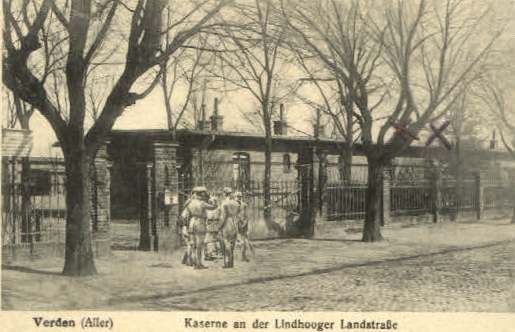
The single storey blocks housed the primary school and Medical Centre.
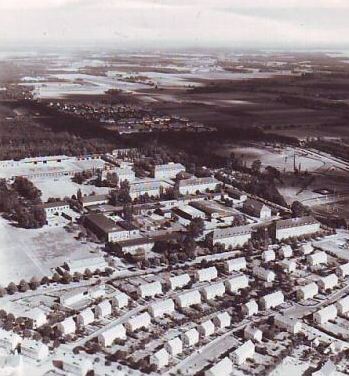
Caithness Barracks.
The barracks was originally in two separate building lots 1) the original (ca 1870) cavalry barracks – the workshops (Mike Troop) was the first building behind the newer barracks (HQ Squadron building) – it has since been demolished 2) the newer “Adolf” built barracks, which judging by the wide roads and generous curves in the road was home to a Wehrmacht artillery or air-defence unit. The road layout was designed to accommodate half-track gun-tractors. The barracks has since become the Kreisverwaltung (County Hall), the Cinema still exists, and the former NAAFI shopping centre seems to be an art & crafts sales centre.
Roger
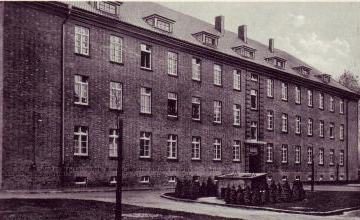
Aller Kaserne
.jpg)
I did two tours in Verden and my wife originates from Eystrup which was where the GOC’s residence was (Villa Stube). I am reliably informed that Caithness Bks was originally known as Lindhooper Kaserne (it is on Lindhooper Str). Shiel Bks was Known as Brunenweg Kaserne (it is on Brunenweg Str). In my army career and civvy life I have known Verden since 1968.
Bailey
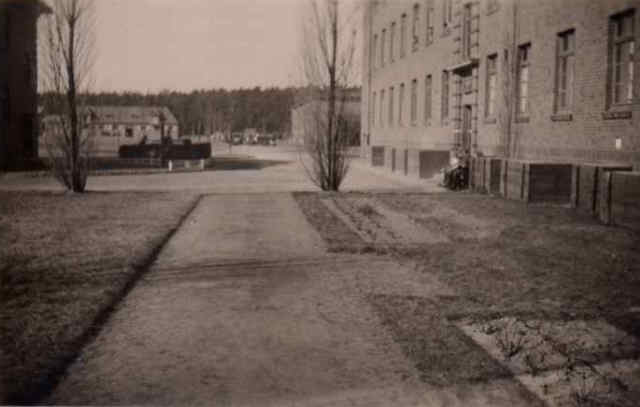
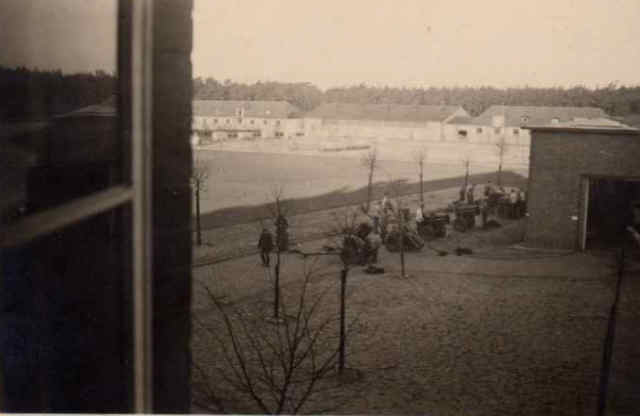
Former guard room.
Courtesy of Mr Steve Wright
.jpg)
.jpg)
.jpg)
.jpg)
.jpg)
.jpg)
.jpg)
.jpg)
.jpg)
Riding hall converted into a gym.
.jpg)
Was this your parking slot?
.jpg)
AAC Flight
.jpg)
2 and 3 Sqn Garages
.jpg)
B Troop, 3 Sqn and P Troop 2 Sqn garages.
Bravo Troop Garages – I spent some time here as well but don’t remember sharing the space with any other troop. After all, we had two squash courts and nineteen vehicles to get in here. I served in Bravo Troop. 3 Squadron from December 1973 to about May / June 1979. Being an “operator” the garages were not normally part of our domain. However, because of a decision not to use RCT drivers for our Auto 40’s and MCVF’s I was trained as an HGV driver and from then on drove MCVF Oscar on exercise. I continued to drive the vehicle on exercise even after becoming the vehicle commander as did the Foreman of Signals commanding the Auto 40.
Tony Gaynor ex-Royal Signals
Above and below – HQ MT, QM’s and Cook House.
.jpg)
Courtesy of Mr Steve Wright
Regarding the photos of Shiel and Caithness Bks Verden. This was my first posting as a young REME Craftsman. I was posted there in March 1973 and at the time it was 1 Div HQ & Sig Regt. I initially was a REME Clerk in HQ REME and then moved over to the LAD. So I lived in both Barracks.
The LAD was accommodated in Shiel Bks on the top floor of the main block as you entered the barracks and we shared the RMO cookhouse facilities.
I left Verden in December 1974.
Ian Loftus
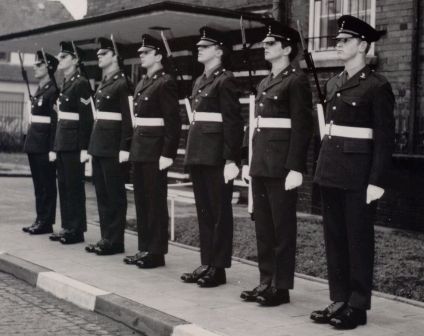
Guard Mounting – Caithness Barracks 1976. Recognise anyone?
Photograph courtesy of Tim Hopkins ex-A Squadron, 1 Div HQ and Signal Regt, Royal Signals
Looking through photos from Caithness Barracks I spotted a B&W photo in which I featured – “It’s Me!!!!”
Photo was of an honour guard and titled “Mounting Guard” – I am the soldier in the centre of the group (there being seven I am number four whichever end you start counting from) I remember being selected for several of these – at least three. Would possibly have had to do more but made sure that I was quite a busy bod in those days.
Tony Gaynor ex-Royal Signals.
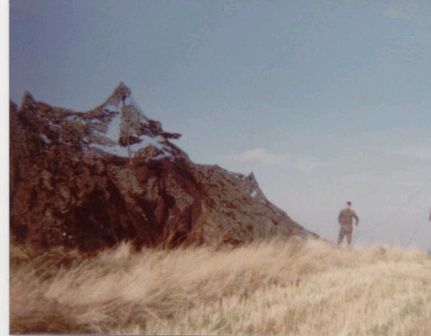
On Exercise somewhere in Germany.

Public Relations Exercise or “Do I have to Sarge??”
Photographs courtesy of Tim Hopkins ex- A Squadron, 1 Div HQ and Signal Regt, Royal Signals
In Caithness Barracks the ammunition store must have been some form of auxiliary stable (perhaps blacksmiths??) as I remember the rings on the walls of the building, inside and out. The buildings used for our vehicles were obviously ex stable blocks with the associated rings etc for tethering horses.
Jim Toms
I was posted to 7 Armd Div Sig Regt at the end of March 1952 and served with the REME LAD. The workshop was located on the edge of the sports ground and next to the large iron gates (I never did see them open!) at the side of the road to Shiel Barracks. I was posted back to the UK on 22 Aug 1953. We lived on the top floor of the guard house barrack block, just inside the main gate.
John Banks
In Caithness Barracks the ammunition store must have been some form of auxiliary stable (perhaps blacksmiths??) as I remember the rings on the walls of the building, inside and out. The buildings used for our vehicles were obviously ex stable blocks with the associated rings etc for tethering horses.
Jim Toms
I was posted to 7 Armd Div Sig Regt at the end of March 1952 and served with the REME LAD. The workshop was located on the edge of the sports ground and next to the large iron gates (I never did see them open!) at the side of the road to Shiel Barracks. I was posted back to the UK on 22 Aug 1953. We lived on the top floor of the guard house barrack block, just inside the main gate.
John Banks
I was at Caithness Bks from Aug 1982 – Aug 1986 serving with 1 Sqn as a Radio Relay Operator. Whilst stationed there I was told that the original occupants of the barracks were a Horse Drawn Artillery unit. This was supported by the stable like setup of the basements under each of the accommodation blocks and the wide doors at one end of each block.
With reference to the photograph of 2 and 3 Sqn garages, the garages at the far end of the block, if I remember correctly, are 1 Sqn’s. The photo captioned “AAC Flight” looks like the parade ground, taken from the POL point, with 1 and 2 Sqn garages at the far end. The ramps we used for getting under our wagons can be seen in front of the 1 Sqn garages. Behind the garages was an open area, with a helicopter landing pad. Behind that was the REME LAD workshop. There was a massive collection of wood and combustibles, each year, for the 5 November bonfire and fireworks which took place on the grassed area around the helicopter landing pad.
N J (Heff) Heffernan, LCpl – 24466694
